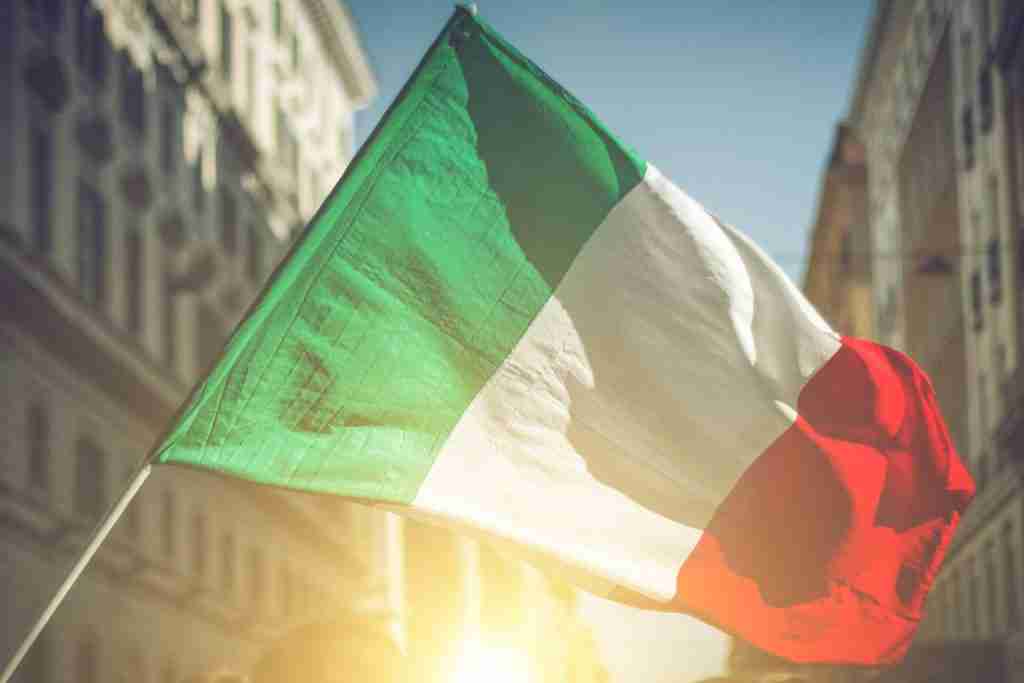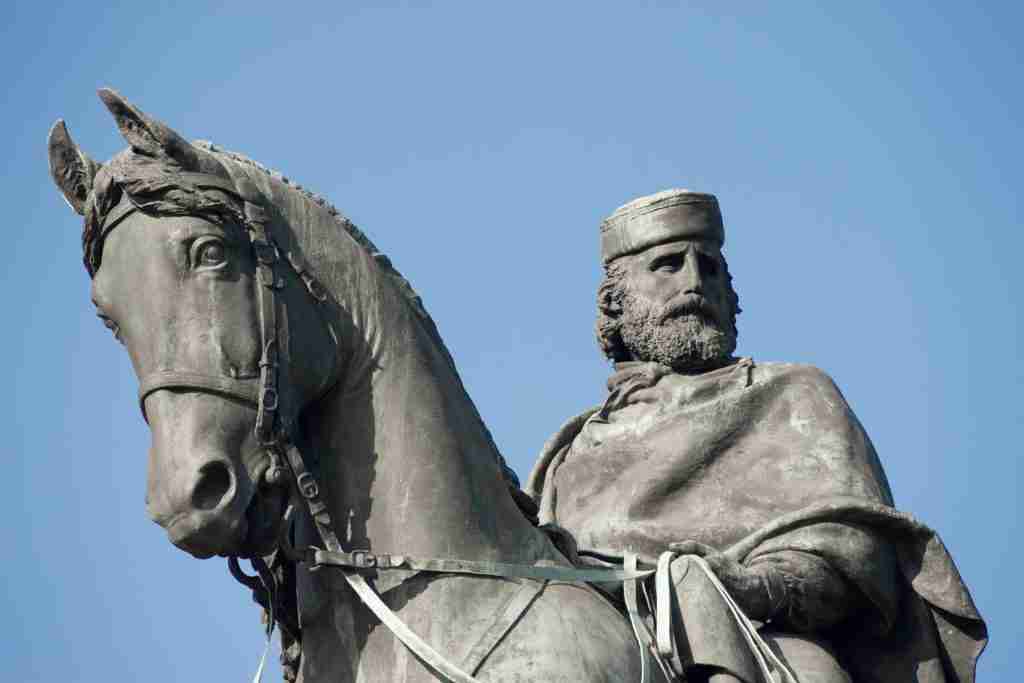Are you ready to take a journey into the vibrant and captivating history of the Italian flag? Well, buckle up because we’re about to dive right in! In this article we’ll introduce t history of the Italian Flag: uniting Italians under the Tricolore. We’ll uncover the fascinating stories behind the birth of the national anthem, the symbolism of the strawberry tree, and the Italian flag’s role in the revolutionary times of 1848. So, get ready to be amazed as we explore how the Tricolore flag has united Italians under its proud colors throughout history.
“And the three-colored flag | she was always the most beautiful: | we always want that, | we want freedom”!
Francesco Dall’Ongaro

History of the Italian Flag
Italy, a country known for its rich history, vibrant culture, and delicious cuisine, has an iconic symbol that represents its unity and national pride – the Italian flag. Affectionately known as the “Tricolore,” this flag has a fascinating history that spans centuries and is deeply intertwined with the struggles and triumphs of the Italian people.
Reggio Emilia and the Italian flag
Reggio Emilia is a city in northern Italy that has played an important role in Italian history. The city dates back to the Roman era when it was founded in the 2nd century BCE. After the fall of the Roman Empire, Reggio Emilia was ruled by various powers including the Lombards, Franks, and the House of Este. In the 12th century, Reggio Emilia established itself as an independent commune and was a member of the Lombard League against Emperor Frederick Barbarossa. As an independent city-state, Reggio Emilia flourished in the following centuries becoming an important trading hub and center of culture.
However, Reggio Emilia is perhaps best known for its pivotal role in the creation of the Italian tricolor flag.
The origins of the flag trace back to the late 18th century when the French Revolution sparked revolts against monarchies across Europe. In 1797, Napoleon Bonaparte invaded northern Italy and established sister republics that adopted flags reflecting French revolutionary ideals of liberty, equality, and fraternity.
Reggio Emilia was part of the Cispadane Republic which adopted a horizontal triband green, white, and red flag. This was inspired by the French tricolor but oriented horizontally rather than vertically.
When Napoleon formed the Cisalpine Republic the following year after conquering Milan, he merged the Cispadane Republic into this new nation. The Cisalpine Republic adopted the vertical French tricolor but added the coat of arms of Milan in the white stripe. In 1802, Napoleon then transformed the Cisalpine Republic into the Italian Republic with Milan as the capital. However, Reggio Emilia rose up in revolt against French dominance and the tricolor came to represent opposition to Napoleon’s rule.
After Napoleon’s defeat and the Congress of Vienna in 1815, northern Italy came under Austrian control. The Italian tricolor was banned but adopted by clandestine patriotic groups who saw it as a symbol of Italian nationalism and resistance to foreign rule. When uprisings broke out in 1831, the provisional government in Modena readopted the Italian tricolor flag.
Finally, during the war of Italian unification in 1848, the flag played a crucial role. The Kingdom of Sardinia invaded Lombardy-Venetia with the Italian tricolor raised as their symbol. Giuseppe Garibaldi’s Expedition of the Thousand to conquer Sicily in 1860 also carried this banner. When the Kingdom of Italy was proclaimed in 1861 under Victor Emmanuel II, the Italian tricolor was designated the new nation’s official flag. Though originally derived from foreign influences, it had come to proudly symbolize the spirit of the Italian people.
So, in many ways, the history of the Italian flag is intertwined with that of Reggio Emilia which helped inspire one of the earliest variants of the iconic tricolor design. From an emblem of revolt against the French to a signal of national unity, the Italian tricolor reflects the passion for liberty and independence that emerged in cities like Reggio Emilia.

The Genoese Revolt and the Birth of the National Anthem
One of the key milestones in the history of the Italian flag can be traced back to the Genoese Revolt of the 19th century. It was during this event, on December 10, 1847, in Genoa’s square of the Santuario della Nostra Signora di Loreto, that “Il Canto degli Italiani” (The Song of the Italians) by Goffredo Mameli and Michele Novaro was played for the first time.
Little did they know that this stirring anthem would go on to become the Italian national anthem in 1946.
The lyrics of “Il Canto degli Italiani” echo the hope for a united Italy, symbolized by the Italian flag. The verse, “Let one flag, one hope, gather us all. The hour has struck for us to unite”, speaks to the longing for a united nation, still divided at the time.
History of the Italian Flag: the Strawberry Tree and its Symbolism
During this period, the strawberry tree plant began to be considered a national symbol of Italy. With its green leaves, white flowers, and red berries, reminiscent of the colors of the Italian flag, the strawberry tree became an emblem of unity. This beautiful plant is even proclaimed as the national tree of Italy, a testament to the deep significance of the flag and its symbolism.
The Italian Flag and the Revolutions of 1848
The Italian flag gained further prominence during the revolutions of 1848, a series of uprisings across Europe that sought political and social change. The Five Days of Milan, an armed insurrection in March 1848, saw an abundance of flags and tricolour cockades being proudly displayed. These symbols of unity and resistance against Austrian rule became a rallying point for the people of Italy.
History of the Italian Flag: significance
Today, the Italian flag continues to hold immense significance in modern Italy. Whether it is flying proudly outside public buildings or being hoisted during national holidays, the tricolore represents the unity and diversity of the Italian people.
The flag has also played a prominent role in important events throughout Italian history. For example, it was raised at the top of K2, the second-highest mountain in the world, during the Italian expedition in 1954.
This momentous occasion saw climbers Achille Compagnoni and Lino Lacedelli become the first to reach the summit. Additionally, in 2011, astronaut Roberto Vittori brought the Italian flag to the International Space Station, commemorating the 150th anniversary of Italy’s unification.
Italian flag in Sports and in culinary delights
In Italy, the tricolore takes on a whole new level of excitement and passion. Whether it’s football, volleyball, basketball or any other sport, you can bet that the Italian flag will be waving proudly among the crowd, ferrying fans towards memorable victories and soul-crushing defeats. It’s a symbol of unwavering support and undying loyalty to the Italian sports teams, showcasing their prowess on the international stage.
But wait, there’s more! The tricolore even commands a place in the realm of culinary delights. Back in 1889, an ingenious creation was invented, a culinary masterpiece named after Queen Margherita of Savoy. Yes, you guessed it right, it’s the pizza Margherita!
With its green basil, white mozzarella, and red tomato sauce, this dish pays homage to the tricolore flag. Who knew that a simple pizza could become a gastronomic salute to Italy’s national pride?

Tricolore in Modern Italy
In the modern era, the Italian flag serves as a proud symbol of the nation’s unity and identity. It waves valiantly atop public buildings, fluttering in the wind with a sense of grace and purpose. One cannot help but feel a surge of patriotism when gazing upon those vibrant hues of green, white, and red. It’s as if the flag is inviting us to appreciate the beauty and diversity of the Italian culture.
The Italian Flag’s Role in important events
Throughout Italy’s rich history, the Tricolore has witnessed and played a vital role in significant events. Perhaps one of the most notable occasions was the return of Trieste to Italy in 1954. After agreements were signed between Italy, the United Kingdom, the United States, and Yugoslavia, the Italian flag triumphantly soared high as the city rejoined its homeland. It was a moment of great joy and celebration, symbolizing the reunification of a divided territory.
But the flag’s journey doesn’t end there. It has thrived in the face of adversity and “adversity” isn’t just a tough word, it took part in the minds and hearts of the people.
During World War II, as Italy endured occupation and saw the rise of the Resistance, the tricolore proudly represented the spirit of freedom and hope. It stood as a beacon of resilience, reminding Italians that their unity would eventually lead to victory and liberation.
The bottom line
In this content we talked about history of the Italian Flag: uniting Italians under the Tricolore. The chronicle of the Italian flag is a tale of unity, resilience, and the longing for a united Italy.
From its origins in the Genoese Revolt to its symbolization in the strawberry tree and its association with the revolutions of 1848, the Tricolore has remained a powerful emblem that unites Italians around the world. It represents the rich history, vibrant culture, and indomitable spirit of the Italian people – a nation that proudly waves its flag high.
From fluttering atop historic landmarks to adorning jerseys during nail-biting sports matches, it ignites a sense of pride and belonging in every Italian’s heart. So, next time you see the green, white, and red waves overhead, remember the stories and struggles that have shaped this iconic flag. Viva l’Italia!
Stay tuned for more interesting facts about Italy as told by Italians and find out more about our LCN App.

